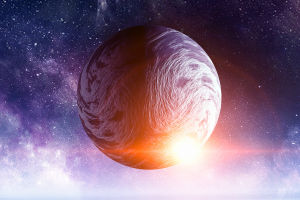Hey Lykkers! Have you ever been amazed by the stunning visual effects in your favorite movies or shows? From the whimsical scenes in A Trip to the Moon to the groundbreaking digital revolution in Genesis, special effects have been an essential part of the film and TV industry.
In this article, we'll take a deep dive into the history, types, and future of special effects, exploring the technologies and creative processes behind the jaw-dropping visuals that capture our imagination.
History of Special Effects
The history of special effects goes way back to the birth of cinema. In 1902, Georges Méliès created A Trip to the Moon, a film that is considered the pioneering work in special effects. Méliès used techniques like editing, double exposure, and other methods to create stunning visual effects. As technology progressed, the types and complexity of special effects grew.
In the 1960s and 1970s, advancements in computer technology began to gradually transform special effects into the digital realm. In 1982, the movie Genesis became the first to extensively use computer-generated imagery (CGI), marking the beginning of a new era in special effects.
Types of Special Effects
Special effects can be divided into two main categories: practical effects and digital effects.
Practical Effects
Practical effects refer to physical techniques used on set to create the desired effect. These include props, makeup effects, and explosions The advantage of practical effects is that they provide real physical feedback, making them more relatable for the audience.
For example, in Jurassic Park, the use of dinosaur models added a sense of realism to the film. Practical effects are often used when filmmakers want to create something tangible that actors can interact with on set, adding an extra layer of authenticity to the scene.
Digital Effects
Digital effects, on the other hand, use computer-generated images (CGI) and animations to create effects. As technology has advanced, digital effects have become the dominant form of special effects in modern filmmaking. These effects include CGI, compositing, and post-production editing.
The advantage of digital effects is that they can create scenes or elements that are impossible to capture in reality, expanding the creator's imagination. For instance, the Pandora planet in Avatar was perfectly realized using CGI technology, showcasing the potential of digital effects to create entirely new worlds.
The Special Effects Process
The process of creating special effects typically involves several stages, including pre-production, shooting, and post-production.
Pre-Production
During the pre-production phase, creators need to plan and design everything in detail. This includes script analysis, concept design, and technical planning. Pre-production is a crucial step because good planning can significantly reduce the difficulty of post-production work. It's where the groundwork is laid for all the effects, ensuring that everything runs smoothly during filming and afterward.
Shooting Phase
During the shooting phase, the special effects team works closely with the director and cinematographer to ensure that the effects blend seamlessly with the live-action footage. This stage involves setting up the scene, practical effects, and directing the actors.
It's a highly coordinated effort that requires excellent teamwork to achieve the perfect shot. Special effects during shooting can involve physical elements like explosions, or digital elements like green screen effects, which are added later.
Post-Production
Post-production is the final stage of special effects creation and one of the most critical steps. This is when the special effects team uses various software and tools to edit and composite the footage. Key tasks include CGI creation, compositing, and color correction. The quality of post-production directly impacts the viewer's experience, which is why this phase requires highly skilled professionals and advanced technical tools.
Tools Used in Special Effects
Creating special effects requires a variety of tools and software. Some commonly used tools include:
• 3D Modeling Software: Programs like Maya, Blender, and 3ds Max are used to create virtual characters and environments.
• Compositing Software: Tools like Adobe After Effects and Nuke are used to combine different layers of images into a seamless final product.
• Video Editing Software: Software like Adobe Premiere Pro and Final Cut Pro is used to edit and adjust the raw footage.
• Special Effects Plugins: Many programs offer plugins that provide additional special effects and features, helping artists achieve more complex visuals.
Despite all the advancements in technology, the process of creating special effects still presents several challenges. Time constraints, budget limitations, and technical obstacles are just a few hurdles that special effects teams must overcome. It often takes a significant amount of time and effort, especially in the post-production phase.
Additionally, the production of special effects can be costly, requiring investment in software, hardware, and skilled labor. Special effects teams must continually learn and adapt to new tools and techniques to stay competitive.
The Future of Special Effects
With ongoing advancements in technology, the future of special effects holds endless possibilities. Virtual reality (VR) and augmented reality (AR) technologies are set to bring new opportunities to special effects creation. Creators will be able to craft immersive visual experiences that make audiences feel even more present in the story.
Artificial intelligence (AI) is also expected to play a bigger role in special effects production. AI can help automate certain processes, improving efficiency and accuracy while reducing labor costs. In the future, special effects may focus more on interactivity, allowing viewers to participate in the story by choosing different plot developments and visual experiences.
Special effects creation is a complex and creative process that involves multiple stages and technologies. Whether it's practical effects or digital effects, they play an essential role in movies and TV shows. As technology continues to progress, the future of special effects will become even more diverse and innovative. For creators, mastering the tools and techniques of special effects will be key to telling captivating stories that wow audiences worldwide.
Lykkers, what's your favorite special effect in a movie? Do you enjoy the mix of creativity and technology that goes into them? Let us know your thoughts!


